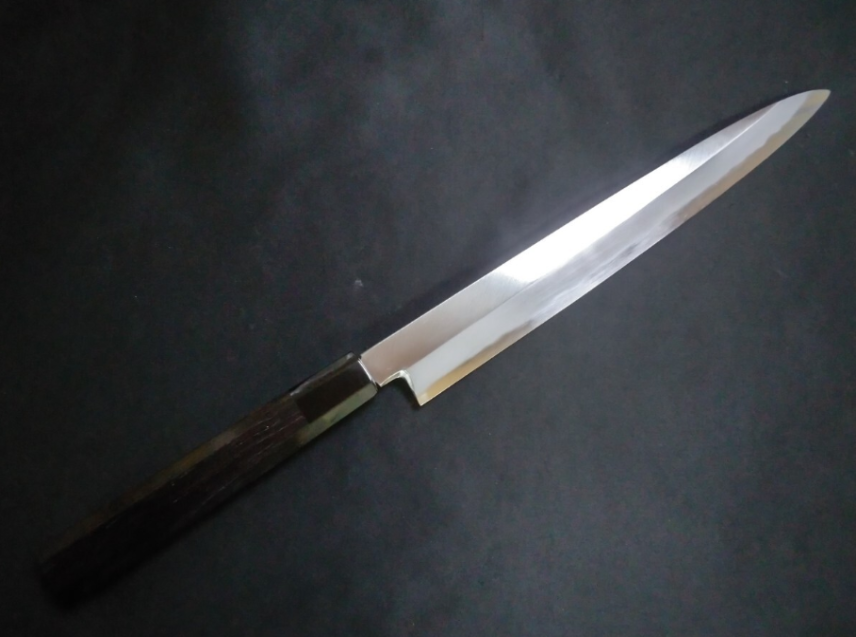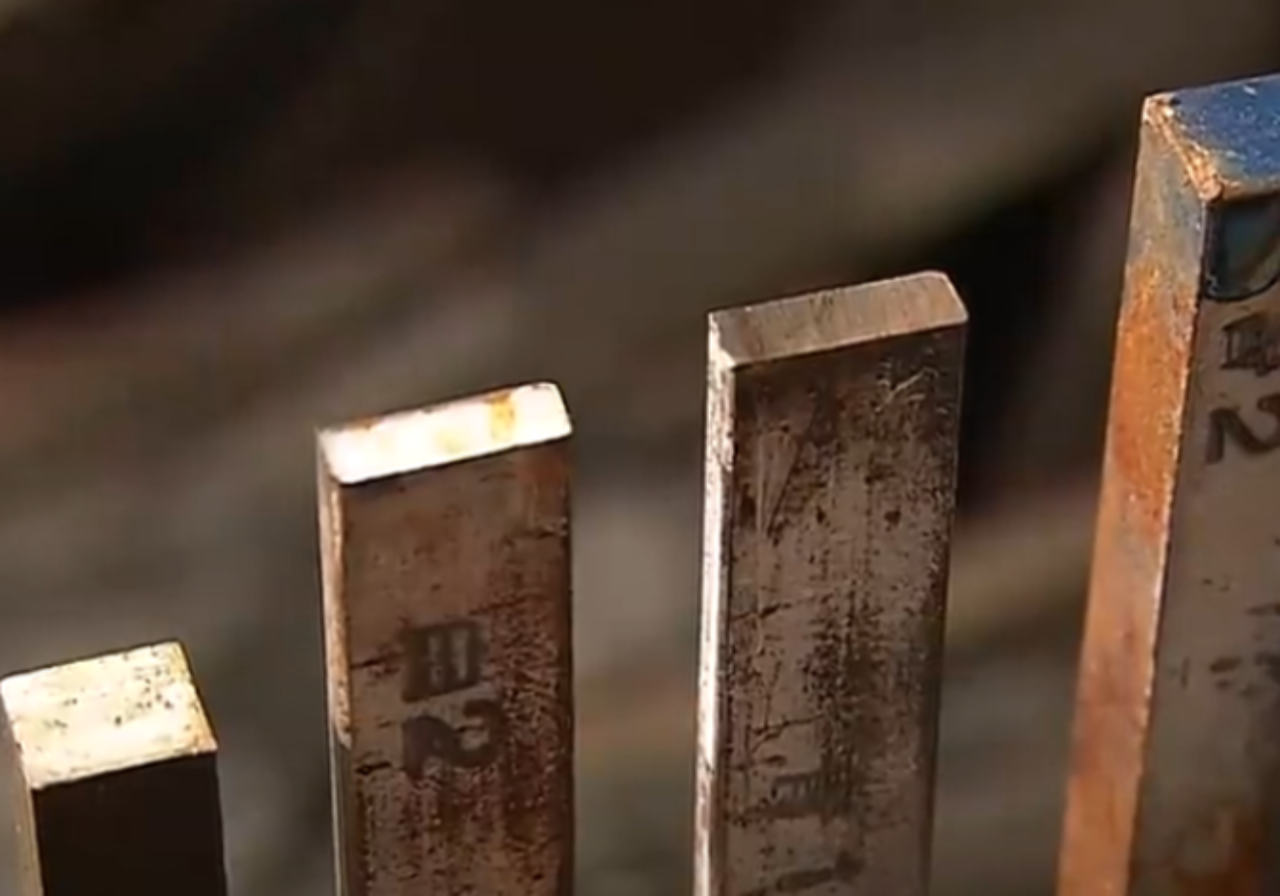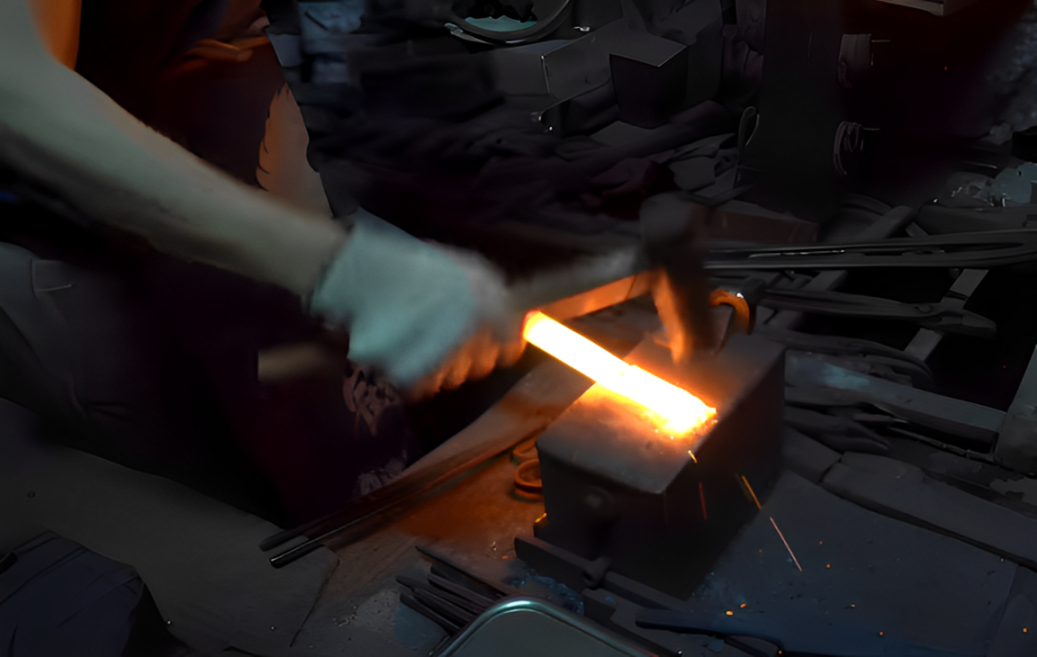White Steel #1 vs White Steel #2 — Choosing the Right Japanese Knife Steel
-
-
DECEMBER 16, 2024
-
When selecting a traditional Japanese knife, the choice of steel defines both its character and its performance. Among the most respected options are White Steel #1 and White Steel #2, both celebrated for their purity, sharpness, and connection to centuries of Japanese craftsmanship. While they share the same lineage, their subtle differences—carbon content, hardness, and sharpening feel—make each better suited for different chefs and cooking styles. This guide explores those differences to help you choose the steel that best matches your culinary journey.
-
1. The Appeal of White Steel: Purity and Sharpness
-
White Steel ("Shirogami") is celebrated for its excellent sharpness and ease of sharpening. Manufactured with minimal impurities, this refined steel is highly favored among chefs, particularly in the world of Japanese cuisine. Let’s explore the differences between White Steel #1 and White Steel #2 in more detail.
-

-
2. White Steel #1 vs. White Steel #2: Key Differences
-
-
White Steel #1
Features:
- Contains more carbon compared to White Steel #2, achieving higher hardness and sharper edges.
- Capable of reaching a maximum hardness of HRC66 with proper heat treatment.
- Offers prolonged sharpness, ideal for precision cutting tasks.
- Requires advanced skills for sharpening due to its high hardness.
Pros:
- Exceptional sharpness and edge retention.
- Perfect for professional chefs prioritizing cutting precision.
Cons:
- Prone to chipping due to its hardness.
- Demands meticulous maintenance to prevent rust.
-
White Steel #2
Features:
- Lower carbon content than White Steel #1, providing a balanced combination of hardness and toughness.
- Known for its ease of sharpening, making it suitable for both beginners and professionals.
- Often used as a benchmark for comparing other types of steel.
Pros:
- Easier to sharpen than White Steel #1.
- Balanced sharpness and durability.
Cons:
- Slightly less edge retention compared to White Steel #1.
- Requires regular care to prevent rust.
-

-
3. White Steel #1: For the Ultimate Cutting Performance
-
White Steel #1 represents the pinnacle of sharpness among White Steels. Its high carbon content allows for unparalleled edge retention, making it ideal for delicate tasks like slicing sashimi. However, its hardness demands advanced sharpening techniques, which may be challenging for beginners.
-
4. White Steel #2: A Versatile All-Rounder
-
White Steel #2 is often described as "pure and straightforward," making it a popular choice for those new to Japanese knives. Its slightly softer nature reduces chipping and enhances ease of maintenance. This balance of performance and usability has garnered widespread support from both novice and experienced chefs.
-
5. Finding the Right Steel for You
-
Key Considerations:
- Skill Level: If you’re confident in your sharpening and maintenance skills, White Steel #1 delivers top-tier performance. For those prioritizing ease of use, White Steel #2 is an excellent option.
- Purpose: For tasks demanding sharpness and edge retention, White Steel #1 is ideal. For everyday versatility, White Steel #2 is recommended.
- Budget: While both are high-quality, knives made from White Steel #1 tend to be more expensive due to their specialized properties.
-

-
6. Care Tips for White Steel Knives
-
Regardless of your choice, proper maintenance is crucial to preserving performance:
- Always wipe off moisture after use to prevent rust.
- Store in a dry environment and use blade covers for protection.
- Regularly sharpen with whetstones suited for high-carbon steel.
-
7. Conclusion: Finding the Best Steel for Your Needs
-
In the end, choosing between White Steel #1 and White Steel #2 is not about which is “better,” but about which aligns with your needs.
- White Steel #1: unmatched sharpness and edge retention, perfect for professionals who demand precision.
- White Steel #2: balanced, approachable, and versatile—an ideal choice for everyday cooking and for those who value ease of sharpening.
Whichever you select, both steels carry the legacy of Japanese craftsmanship, ensuring that your knife is not just a tool, but a lifelong partner in your cooking.
White Steel #1
-
The Pinnacle of Japanese Knife Steel
In the hands of a skilled chef, White Steel #1 becomes more than just metal — it becomes precision, artistry, and expression.
With its ultra-high carbon content and near-zero impurities, this steel achieves unmatched sharpness and control, demanding both respect and mastery.
Discover why top chefs around the world choose White Steel #1, and how its purity transforms every cut into a statement of craftsmanship. -
White Steel #2
-
Pure steel, pure skill.
White Steel #2 isn’t just a material—it’s a bridge between centuries of Japanese craftsmanship and the chef’s hand today. Discover why this high-purity carbon steel is trusted by masters, loved by beginners, and celebrated for the way it sharpens, slices, and lives in harmony with its owner.
-

White Steel #1
Refined sharpness, elevated.
With higher carbon content than White Steel #2, White Steel #1 delivers a finer edge that lasts longer. It rewards skilled hands with unmatched precision, making it the choice for those who accept nothing less than excellence.

White Steel #2
Where traditional sharpness begins.
Made from ultra-pure carbon steel, White Steel #2 offers razor-sharp edges that respond instantly to the whetstone. Its clarity and control make it ideal for chefs who value precision and the authentic feel of Japanese blades.

Material of Knife
Understanding a Japanese knife begins with its steel. At KIREAJI, we introduce the core materials—White Steel, Blue Steel, Ginsan, and Super Steel—explaining how each influences sharpness, durability, and ease of care. By learning these differences, you can choose a knife that truly fits your cooking style and values.

The Soul of Craftsmanship
-
The Lesson of the Blade
"Each time I forge a blade, I am reminded: there is a blade only you can create in this world. Every person will one day face a moment when they must stand before their unique role. In that moment, do what only you can do, in the place where you are. However small it may seem, that blade will one day support someone’s life and carve a path toward their future."
-
These words, as if spoken by a master bladesmith, reveal a timeless truth. A Japanese knife is more than steel—it is a mirror of its maker. In life, just as in craft, each of us holds a role that cannot be fulfilled by anyone else.
-
Whether in the kitchen, in your work, or in the pursuit of your dreams, there is always something that only you can shape. To recognize it, to sharpen it, and to carry it forward—this is the true lesson of the blade.

Experience the sharpness trusted by 98% of Japan’s top chefs — handcrafted in Sakai City.
Through our exclusive partnership with Shiroyama Knife Workshop, we deliver exceptional Sakai knives worldwide. Each knife comes with free Honbazuke sharpening and a hand-crafted magnolia saya, with optional after-sales services for lasting confidence.
KIREAJI's Three Promises to You
-

1. Forged in the Legacy of Sakai
From Sakai City—Japan’s renowned birthplace of professional kitchen knives—each blade is crafted by master artisans with over six centuries of tradition. Perfectly balanced, enduringly sharp, and exquisitely finished, every cut carries the soul of true craftsmanship.
-

2. Thoughtful Care for Everyday Use
Every knife includes a hand-fitted magnolia saya for safe storage. Upon request, we offer a complimentary Honbazuke final hand sharpening—giving you a precise, ready-to-use edge from day one.
-

3. A Partnership for a Lifetime
A KIREAJI knife is more than a tool—it is a lifelong companion. With our bespoke paid aftercare services, we preserve its edge and beauty, ensuring it remains as precise and dependable as the day it first met your hand.







